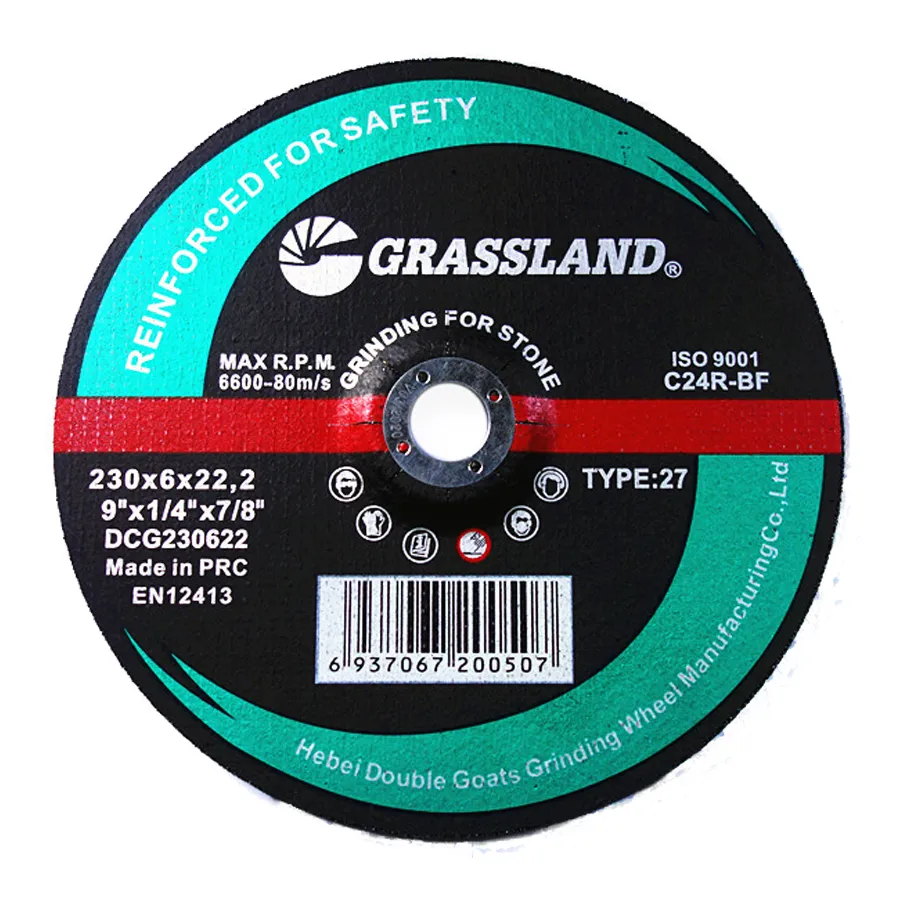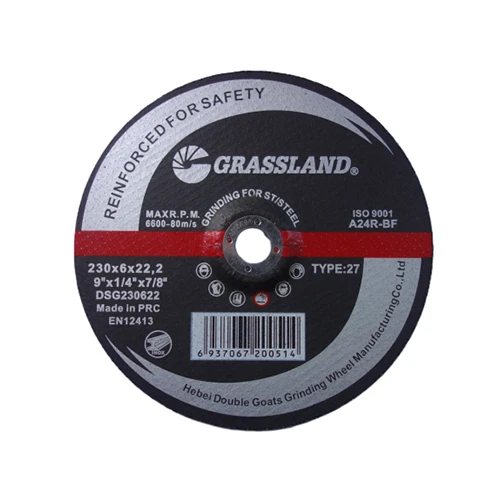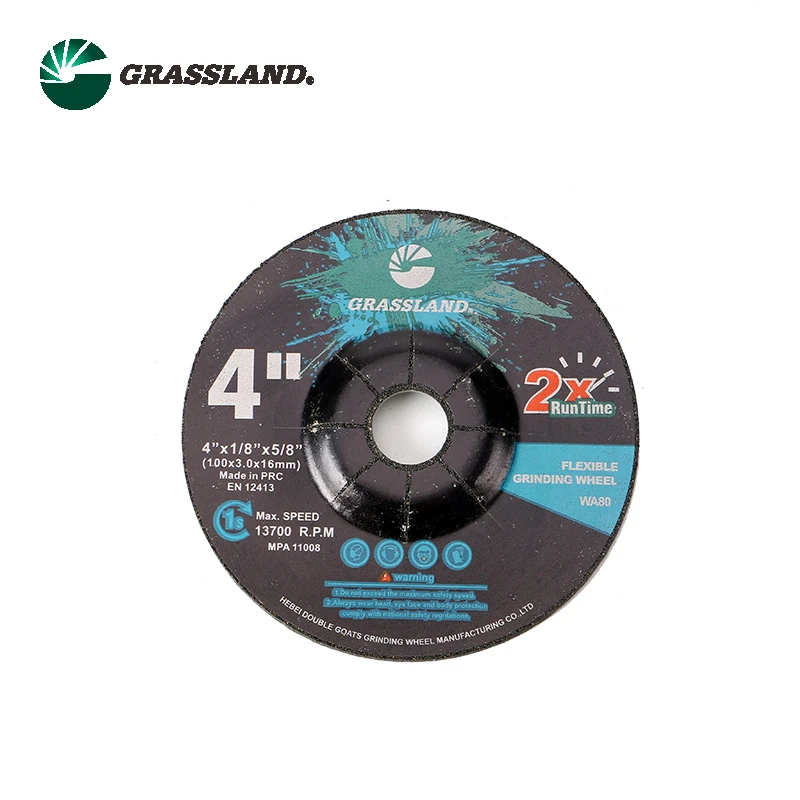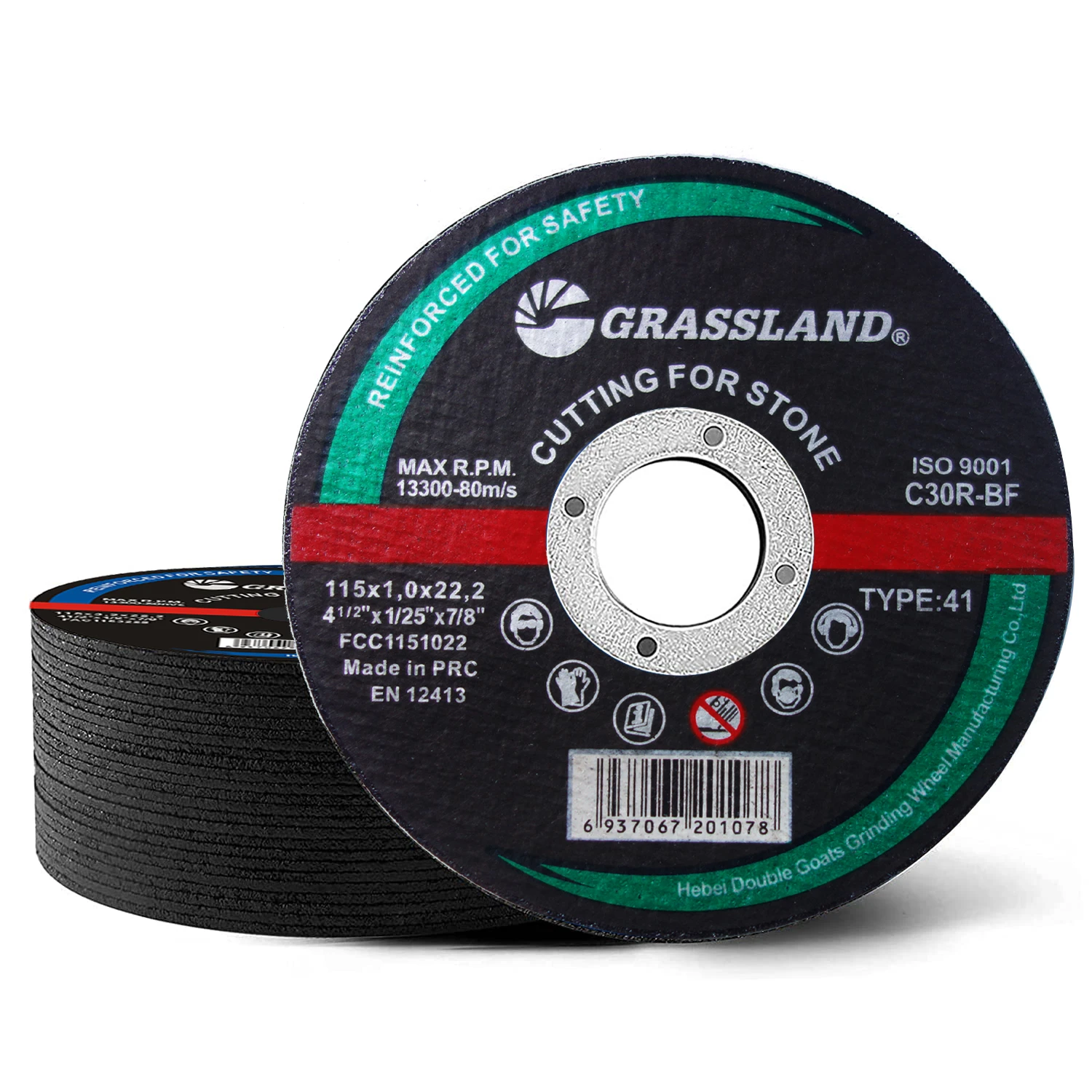Proper maintenance of your grinding wheels for metal, grinding disc for metal, and grinder blade for metal is essential for safety, efficiency, and cost-effectiveness. Whether you're a professional welder, metal fabricator, or DIY enthusiast, understanding how to care for your abrasive tools can significantly extend their lifespan and improve their performance.
This comprehensive guide covers everything you need to know about maintaining your metal grinding tools, from cleaning and storage to recognizing wear patterns and troubleshooting common issues. By following these best practices, you'll ensure smoother operation, better finishes, and safer working conditions.
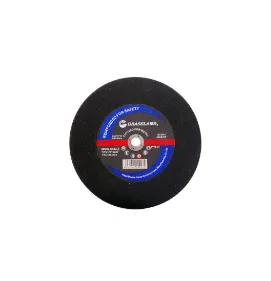
Essential Maintenance for Grinding Wheels for Metal
Grinding wheels for metal require regular attention to maintain their cutting efficiency and structural integrity. After each use, inspect the wheel for cracks, chips, or uneven wear. Even minor damage can lead to catastrophic failure under high-speed operation. Clean the wheel surface using a specialized dressing tool or a stiff wire brush to remove embedded metal particles that can reduce cutting performance.
Proper storage is equally important. Keep your grinding wheels for metal in a dry, temperature-controlled environment to prevent moisture absorption, which can weaken the bonding agents. Store them flat or on dedicated racks to avoid warping or deformation. When mounting a wheel, ensure it's properly balanced and securely fastened to prevent vibration, which can cause premature wear and unsafe operation.
For optimal performance, periodically true your grinding wheels for metal using a wheel dressing tool. This process removes glazed areas and restores the wheel's cutting surface, maintaining consistent material removal rates and reducing heat buildup during operation.
Caring for Your Grinding Disc for Metal
A well-maintained grinding disc for metal delivers better results and lasts significantly longer. Begin by selecting the right disc for your specific application – using the wrong type of disc accelerates wear and can be dangerous. After each use, clean the disc surface with a disc cleaning stick or compressed air to remove metal filings and debris that can clog the abrasive surface.
Rotate between multiple grinding discs for metal if you're working on extended projects. This allows each disc to cool between uses, preventing overheating that can degrade the abrasive bonding. Always check the disc's maximum RPM rating before use and never exceed the recommended speed, as this can cause disintegration during operation.
When storing grinding disc for metal, keeps in their original packaging or protective cases to prevent accidental damage. Avoid stacking heavy objects on top of stored discs, as this can cause warping or cracking. For long-term storage, consider using silica gel packs to control humidity and prevent moisture damage.
Maximizing the Lifespan of Your Grinder Blade for Metal
The grinder blade for metal is a precision tool that demands careful maintenance. Always start by ensuring proper installation – a loose blade can vibrate excessively, leading to uneven wear and potential safety hazards. After each use, clean the blade thoroughly, removing all metal particles and residue that could affect future performance.
For grinder blade for metal showing signs of reduced cutting efficiency, consider sharpening rather than immediate replacement. Many high-quality blades can be professionally sharpened several times before needing replacement, offering significant cost savings. However, don't attempt to sharpen blades that are already near their minimum thickness specification.
Store grinder blade for metal in protective sleeves or cases to prevent edge damage. Keep them in a dry environment to prevent rust formation on the cutting edges. When handling blades, always wear gloves to protect both your hands and the blade's surface from oils and moisture that can accelerate corrosion.
Recognizing When to Replace Your Grinding Wheels for Metal
Knowing when to retire your grinding wheels for metal, grinding disc for metal, or grinder blade for metal is crucial for safety and performance. For grinding wheels and discs, replace them when the abrasive surface is worn down to about 50% of its original thickness or if you notice any cracks, chips, or uneven wear patterns.
Grinder blade for metal should be replaced when the cutting teeth show significant wear, when the blade develops cracks or warping, or when it consistently produces poor-quality cuts despite proper technique. Many blades have wear indicators – pay attention to these visual cues for optimal replacement timing.
Performance issues like excessive sparking, unusual vibrations, or increased cutting resistance often signal that your tools need replacement. Continuing to use worn-out tools not only produces inferior results but also increases the risk of accidents and can damage your workpiece.
FAQs about Grinding Disc For Metal Maintenance Solutions
How often should I clean my grinding wheels for metal?
Clean your grinding wheels for metal after every significant use or whenever you notice reduced cutting performance. For heavy-duty applications, clean the wheel every 15-20 minutes of continuous use to maintain optimal performance.
Can I use the same grinding disc for metal on different materials?
While possible, it's not recommended. Using the same grinding disc for metal on different materials can lead to cross-contamination and reduced efficiency. For best results, dedicate specific discs to particular metals or applications.
What's the best way to store grinder blade for metal?
Store grinder blade for metal in their original packaging or protective cases, in a dry environment away from temperature extremes. Hang them or lay them flat to prevent warping – never stack unprotected blades.
Why does my grinding wheels for metal wear out so quickly?
Rapid wear on grinding wheels for metal can result from excessive pressure, incorrect grit selection for the material, or operating at wrong speeds. Using a wheel meant for softer materials on hard metals will also accelerate wear.
Where can I buy high-quality replacement grinding wheels for metal?
Reputable industrial suppliers, welding supply stores, and authorized online retailers offer genuine grinding wheels for metal, grinding disc for metal, and grinder blade for metal. Brands like Norton, 3M, and DeWalt consistently deliver reliable performance.
Proper maintenance of your grinding wheels for metal, grinding disc for metal, and grinder blade for metal ensures safer operation, better results, and longer tool life. By following these maintenance guidelines, you'll maximize your investment and achieve professional-quality finishes on all your metalworking projects.
Whether you need new grinding discs for metal or professional sharpening services for your grinder blades, investing in proper tool care will pay dividends in performance and safety.
Upgrade your workshop with premium metal grinding tools and experience the difference that proper maintenance and quality equipment can make. Your projects deserve the best tools available – shop now and take your metalworking to the next level!
Post time:Jul - 09 - 2025







